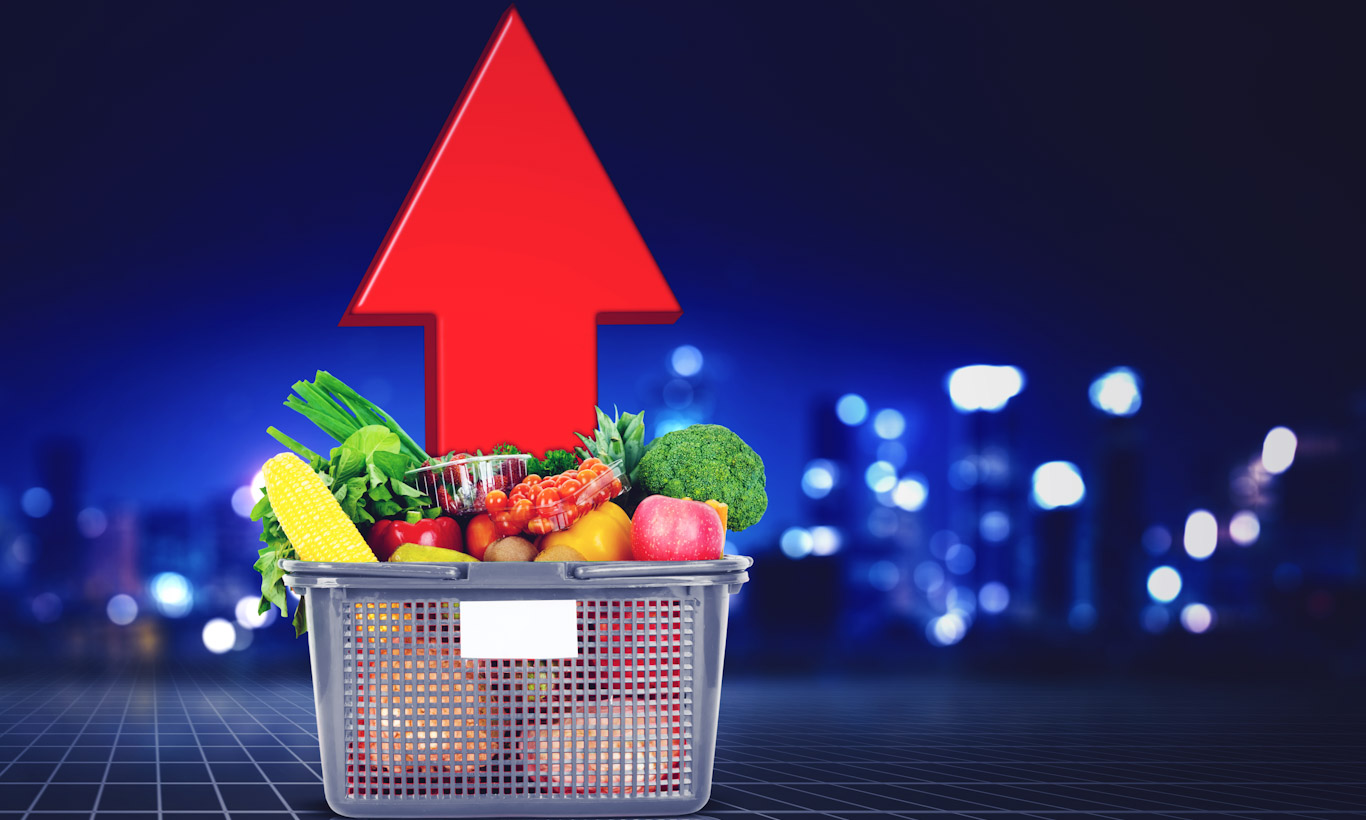In February 2023 the twelve-month rate for ONS CPI food and non-alcoholic drinks inflation reached 18%. This is higher than general inflation (10.4%) for the same period. The IGD had forecasted this to peak at 17 to 19 % in early 2023. Mike Meek, Procurement and Sustainability Director at allmanhall, looks at why we are still seeing such high food prices and rates of inflation and what to expect for the rest of the year.
As an independent measurement of food inflation, The Food Foundation’s ‘Basic Basket’ reported that food inflation increased by approximately 17 to 22% March 2022 to February 2023. The 12-month rates of inflation for all individual CPI food categories increased by over 12.5%, with the exception of fruit, at 6%. The highest price rises were for breads and cereals at 16%, oils and fats at 26.7%, and milk, cheese and eggs at 31.1%. Food inflation is expected to remain problematic, short term. Despite the rate of inflation expected to gradually fall over the next twelve months immediate marketplace inflation is still historically high, which will continue to impact food prices.
With so many uncertainties in the market, providing accurate forecasts and predictions is not an easy task. UK food manufacturers are still experiencing increases in the price of goods, and global commodity prices are still 50% higher than pre pandemic levels, though the effects of Covid disruptions on supply chains are finally diminishing.
“We had expected that the current global economic slowdown and the UK recession would lead to falling demand and act as a downward pressure on prices from a supply side, and that better weather in 2023 post La Niña would lead to improved harvest yields,” comments Meek. “Constraints on supply as a result of the war in Ukraine, coupled with its importance as a global food exporter and high gas prices, have, however, all contributed to keeping to keeping prices stubbornly high.”
As an example of how continued high input costs are impacting industries, the UK egg industry has suffered a decline in the national flock, causing market failure and a decline in self-sufficiency, and the resulting increase in price for eggs.
Weather is also compounding the problem. There are concerns that UK farmers are restricting crop plantings upon fears of potential drought or water restrictions following the record low levels of UK rainfall in February. This will reduce supply, impacting availability, which is likely to then drive-up potato prices later this year. Abroad, poor weather conditions in North Africa and Spain have already had a dramatic effect on prices and availability of some fresh produce such as salads, capsicum peppers and tomatoes resulting in empty supermarket shelves.
On a positive note, some goods are going against the trend. Vegetable oil commodity prices are falling and this should eventually flow through to lower product prices for caterers. Spring is a time at which dairy commodity prices begin to soften, with a drop in the average farmgate milk price. And the price of UK old season lamb is now 10.35% lower than a year ago – good news for those who can afford to keep meat on their menus.
Meek predicts“ food inflation will initially remain tenaciously high, forecasted to be well above the five-year average.” However, many categories have reached or are close to reaching peak inflation. This is not to be confused with cost reductions; really what it means is a slowing of the rate at which prices are increasing. Products that this deceleration could start to impact are bacon and pork. As well as any products that require energy intensive production methods like hothouse tomatoes and capsicum peppers.
So what can foodservice operators do to traverse the recent price rises?
Moving from branded purchases to own label can be highly economical. Particularly if they’re being used in back of house production and where quality standards allow. Another way to release value is by understanding the relative costs of similar product groups and rebalancing purchases in preference of cheaper alternatives. For example, looking at protein at a commodity level, deadweight lamb is 511p/kg, beef 492p/kg and pork 211p/kg. Whereas non-meat protein alternatives such as lentils are 168p/kg – food for thought when planning menus?
It’s important to take into consideration the likely future market dynamics. Be cautious about trying to secure long term price holds when commodity market prices are high, as they currently are, and when some are likely to fall. Longer term price fixes are more effective when commodity prices are low as the risks associated with overpaying are minimised.
Food procurement support from an expert that understands the complexities of food markets and supply has never been so important. This enables the management of the supply chain and offers foodservice operators proficient negotiation, mitigation of extreme and sudden price rises and insightful advice to help plan and make best use of budget available.


